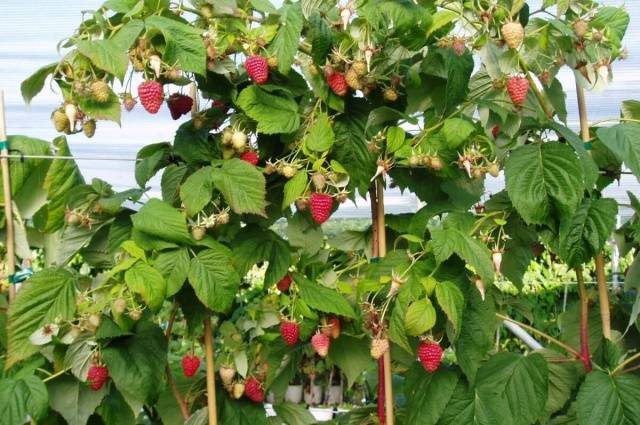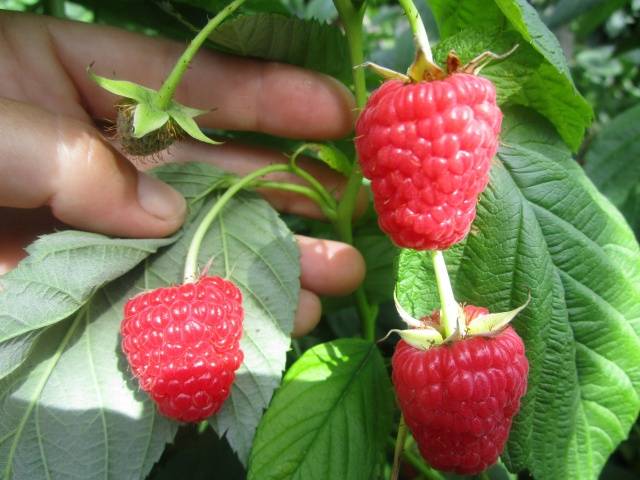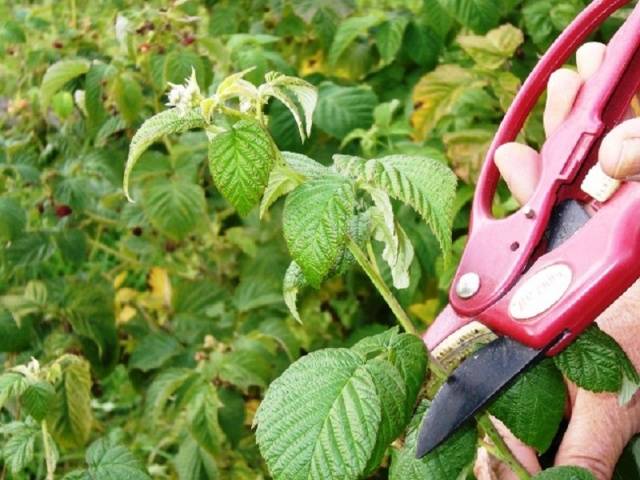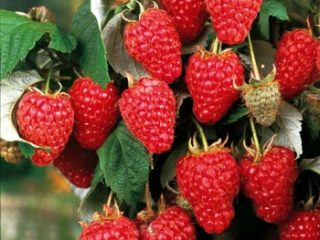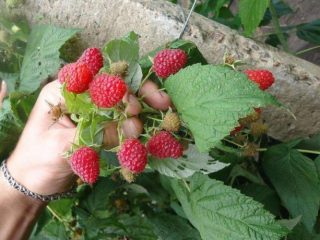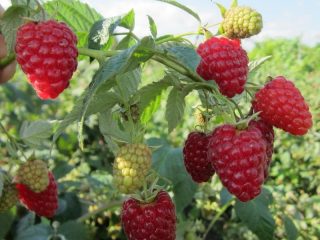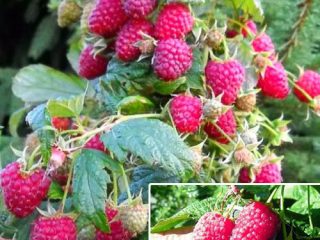Content
Every year the renovation raspberries is gaining increasing popularity among summer residents and gardeners. This is explained by the fact that such a berry has a significant advantage - the plant can bear fruit up to twice a year. Maravilla is one of the most modern and trendy varieties of remontant raspberries. To get to know her better, let's look at her description, photos and reviews. Let's learn about different ways to grow raspberries.
Origin
The Maravilla raspberry variety was obtained by Californian breeders in 1996 for breeding on an industrial scale. Initially, the variety was cultivated in Europe. In 2011, raspberries began to be imported into Russia and sold. And summer residents and gardeners began to grow it on their plots. The full name of the variety is Driscoll Maravilla.
Description of the variety
This is a modern variety of remontant raspberries that bears two harvests per year: from early May to mid-July and from late September to November. In spring, Maravilla produces twice as many berries (65-70% of the total harvest) than in autumn (30-35%). On average, 20-25 tons of raspberries are harvested from one hectare. And when grown in greenhouses - up to 50 tons.
Bushes
Maravilla is characterized by a vigorous and medium spreading shrub that can reach 2.5-3.5 meters in height and 65-70 cm in width. The shoots are erect and thick, evenly covered with small thorns. The plant blooms with medium-sized white flowers that form inflorescences at the tops of the stems. On average, a raspberry bush of this variety consists of 5-6 shoots, which are colored red-violet.
Berries
Maravilla raspberry fruit large, dense, weighing up to 12-14 g and up to 2.5-3 cm in diameter. The berries have a bright red color, a slight shine and a regular shape, similar to a shortened cone. The pulp is aromatic, sweet, with a slight sourness. The seeds are almost invisible.
The fruiting zone on the stem begins at 1.8 m from the ground. This part of the shoot forms a large number of literals, each of which carries 35-40 berries.
Advantages
Raspberries of the Maravilla variety are in demand among gardeners, as they have a number of positive aspects:
- high yield and large fruits;
- during transportation, the berries retain their marketability and taste;
- raspberries can be stored for a long time without caking or rotting (in the refrigerator for up to 15 days);
- the berries do not crumble or darken;
- rich taste;
- early ripening and large volume of the first harvest;
- The raspberry ripening period can be adjusted.
Maravilla raspberries compare favorably with other varieties because they are a beautiful and highly marketable berry. Therefore, this variety predominates on store shelves and is of interest to buyers.
Flaws
Like any raspberry variety, Maravilla has some disadvantages. The greatest harvest can be obtained only by growing shrubs in a greenhouse. In open ground, the berries may not have time to ripen before the onset of cold weather.There is also a risk of replacing the seedling when purchasing.
Agrotechnical features
To plant Maravilla, it is recommended to choose a sunny and windless area with a flat surface. Remontant varieties of berries require more moisture and light than regular raspberries. If the bush is planted in the shade, its yield will decrease.
Groundwater should be no closer than 1 meter from the surface. Remontant raspberries of this variety feel comfortable in fertile, light and slightly acidic soil. The recommended soil type is loam.
The acidity level should vary between 5.7-6.6 pH. If the soil is acidic, ground limestone or dolomite is added to it. Bad predecessors of this variety of raspberries are peppers, potatoes, tomatoes, eggplants and strawberries.
Growing methods
Maravilla raspberries are grown both in film tunnels (greenhouses) and in open ground. Consider each of the methods in detail.
In the open ground
When growing remontant raspberries of this variety in open ground, the second harvest will not please you with its volume. The fruits will not have time to fully ripen before the onset of cold weather. But many summer residents and gardening farms successfully grow Maravilla in this way.
Raspberry seedlings of this variety can be planted both in autumn (October, November) and in early spring (until the buds open). Before planting, the root system of the plant is dipped in a solution of chernozem, mullein or clay.
Planting pattern:
- The selected area is cleared of weeds and the ground is carefully dug up.
- For each square meter, add 2 buckets of rotted peat or humus, a glass of potassium sulfate and superphosphate.
- Dig planting holes 45-50 cm deep at a distance of 70 cm. The interval between rows should be 1.5-2 meters.
- Straighten the roots of the raspberry seedling and lower it into the recess.
- Fill the hole with soil so that the root collar is level with the ground surface.
- The soil around the bush is compacted and watered with 5 liters of warm water.
In film tunnels
This is a growing method allows you to achieve the maximum percentage of ripening of both spring and autumn harvests raspberries Since the berries are not baked in the sun and are not damaged by the wind, the Maravilla bush will bear only high-quality fruits. In closed ground, you can control the air temperature and soil moisture, therefore reducing the likelihood of raspberries becoming infected with fungal diseases.
In the tunnels, Maravilla is grown using long cane technology. Before planting, raspberry seedlings are stored in the refrigerator at a temperature not lower than 0 degrees. In March, they are planted in round containers with a volume of 8-10 liters filled with substrate. The containers are placed in rows, the interval between which is 1.5-2 m. The pots are placed 6-8 cm above ground level to minimize the risk of the bush becoming infected with rot and disease. Since the variety is characterized by tall growth, a trellis is installed in the rows to support the raspberry bush. Using this technology, you can harvest the first harvest already in May. In a regular greenhouse, Maravilla is planted according to the standard scheme.
Features of care
Remontant raspberries require regular care:
- Necessary delete weeds and loosen the soil around the bush, since Maravilla does not like dense, heavy soil. During the season, the procedure is carried out 5-6 times, starting in early spring. The raspberry trunk circle is loosened to a depth of 6-8 cm, and the row spacing - by 12-15 cm.
- The bush is watered once a week with settled, warm water. In hot weather, the soil is moistened more often. Raspberries especially need watering during flowering and ripening of the berries.
- If the soil was fertilized when planting the seedling, then fertilizing should begin in the 3rd year. In early spring, nitrogen-containing substances are added, after 10-15 days complex fertilizer or superphosphate, potassium sulfate and urea are applied, after flowering - potash fertilizers (do not use in autumn). Mullein is added twice a season.
- In April they hold sanitary pruning of bushes raspberries: remove damaged and dried shoots. After harvesting, the tops of the shoots are cut off, leaving 1.5-1.6 meters. Full pruning is carried out in the second year.
- Under the weight of berries, branches can bend and break, so trellises are installed.
Caring for raspberries that grow indoors has some features. The greenhouse needs to be ventilated periodically. It is advisable to mulch the soil with sawdust or nut shells. Some gardeners cover the soil with agrofibre.
Disease Prevention
Maravilla raspberries can be affected by late blight, thrips, spotted drosophila and other diseases and pests. Therefore, it is important to carry out preventive treatment on time.
With the arrival of spring, the berry bush and soil are sprayed Bordeaux mixture or Nitrafen. To destroy pathogenic microorganisms, the procedure is repeated after harvesting.Pest invasion will be prevented by the drug Karbofos or Actellik. Raspberries are processed at the beginning of the growing season.
In addition, it is important to promptly remove damaged branches, clear the area of fallen leaves and follow agricultural cultivation techniques
Reviews from gardeners
Conclusion
Maravilla raspberries are of great interest to gardeners as they produce two harvests per season. The ripening period can be adjusted, which is very convenient. Raspberries can be obtained when they are not available on the market. The price for such berries will be much higher. The fruits tolerate transportation well and can be stored in containers for a long time. Therefore this variety in demand by both small and large retail outlets.

